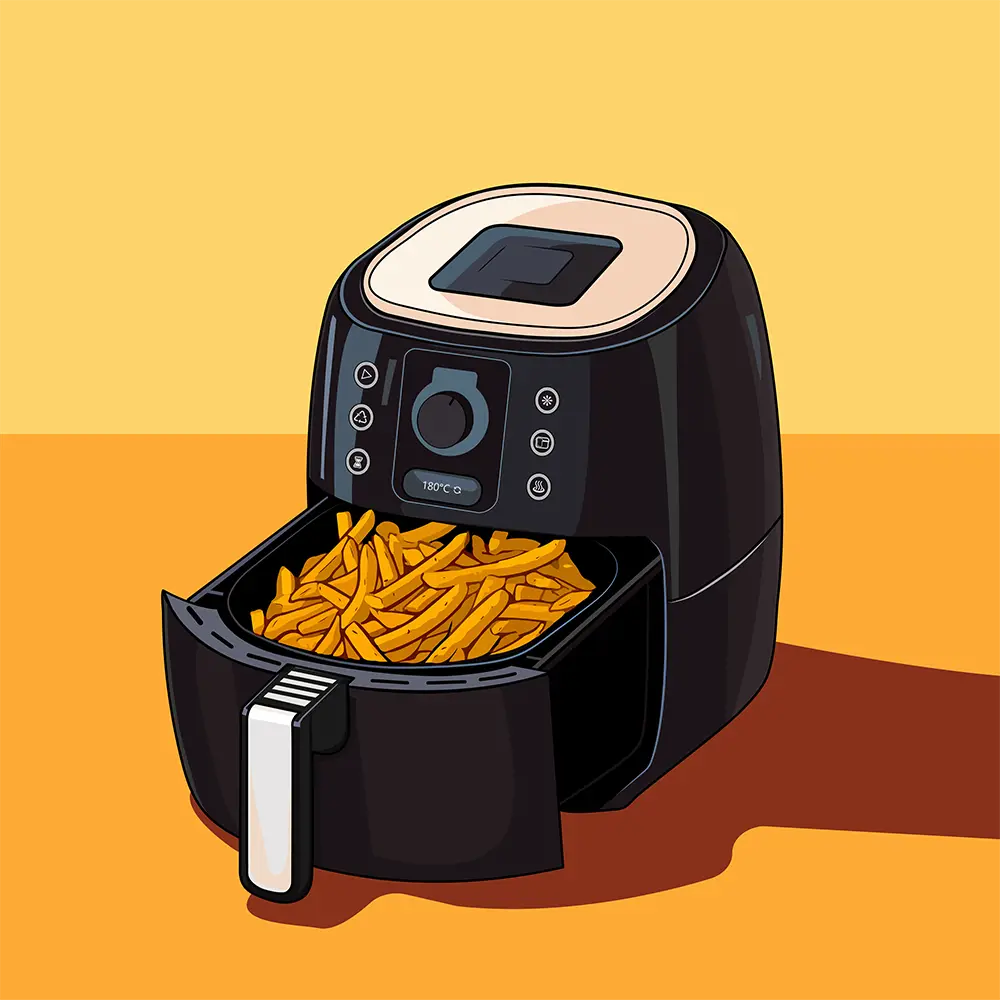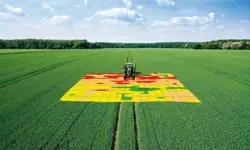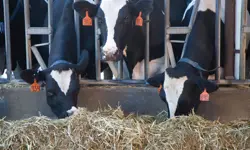
How do air fryers work?
According to a September 2023 report published by kitchenware retailer Lakeland, 45% of UK households now own an air fryer, with sales of the appliance outselling deep fat fryers by more than 92 to one at the store chain that year.
Air fryers offer an alternative to deep frying that lets the home cook prepare favourites such as perfectly crisp and delicious French fries with a fraction of the amount of oil. It sounds like culinary magic – how does it work?
Start the fans, please
An air fryer is essentially a convection oven that fits on the kitchen worktop. “The word ‘air fryer’ is probably a misnomer,” says Séamus Higgins, associate professor of food process engineering at the University of Nottingham. “In a lot of respects, it’s no different to any other oven, in that what you’re doing is heating air to a certain temperature, which in turn cooks the food.”
The air fryer’s main components are a heating element and a fan that rapidly recirculates hot air around the food – which sits in a basket or on a mesh tray – to cook it. Because of this fan, which spins thousands of times a minute, the heat in an air fryer is distributed more evenly than you’d find in a conventional oven, which tends to be hotter at the top and cooler at the bottom. (The actual air speed in most air fryers is equivalent to about 70 mph, says Higgins.) It also makes cooking much faster.
45% of UK households now own an air fryer, with sales of the appliance outselling deep fat fryers by more than 92 to one
More controls let the user set cooking time, temperature, or a range of functions such as ‘air fry’, bake, or roast, depending on what’s for dinner. The main differences between the air fryer and a conventional oven are size, the efficiency of the heating element, and the control, Higgins adds.
How is it that this little oven can produce foods that taste like they’ve emerged from the deep fat fryer… with air?
The chemistry of cooking
Let’s start with what cooking is. Different foods react in different ways when you apply heat – that’s the wonder of it. Proteins denature and stiffen (think eggs, meats), starches break down to become sweeter and more yielding (potatoes or porridge, for example) and sugars caramelise into sticky deliciousness (hello, crème brûlée topping).
In the air fryer, foods get the flavour you’d expect from a deep fat fryer due to the Maillard reaction: the browning of the surface of some foods when they reach a certain temperature.

© Shutterstock
The Maillard reaction – a term that actually describes thousands of different chemical reactions happening in sugars, proteins and amino acids – produces the flavours and aromas that make food delicious, and is responsible for golden fries, bronzed biscuits and browned meats. It’s the layer of oil on the food that enables the Maillard reaction, Higgins says, along with dehydration. Wet food doesn't reach high enough temperatures for the Maillard reaction, as, by definition, its surface remains below water's boiling point.
As for that crispness that makes fried foods so irresistible, that’s because of dehydration on the surface. As the oil coating heats up, it evaporates water in the food so that it cooks quickly and forms a crispy exterior.
A greener way to cook
As well as the health gains from cooking with less oil, a big part of the air fryer’s appeal is its economy. As there’s a far smaller volume of air to heat – about one to six litres compared with about 60 litres for a conventional oven – air fryers require far less energy to operate, and so can cost a lot less to run.
There’s also no need to preheat: “It’s much faster to heat up to get to the temperature required in a smaller box, relative to a bigger oven or a conventional,” Higgins says.
As for that crispness that makes fried foods so irresistible, that’s because of dehydration on the surface. As the oil coating heats up, it evaporates water in the food so that it cooks quickly and forms a crispy exterior.
To find out whether air fryers really do offer the energy savings touted, consumer advice website Which? measured how much wattage was required to cook a variety of foods in an air fryer (and taste tested the results, of course). It concluded that the appliance offers “considerable” energy savings compared to an oven, finding that the air fryer used less than half the energy, “and the results were just as tasty”.
There’s also no need to preheat: “It’s much faster to heat up to get to the temperature required in a smaller box, relative to a bigger oven or a conventional,” Higgins says.
To find out whether air fryers really do offer the energy savings touted, consumer advice website Which? measured how much wattage was required to cook a variety of foods in an air fryer (and taste tested the results, of course). It concluded that the appliance offers “considerable” energy savings compared to an oven, finding that the air fryer used less than half the energy, “and the results were just as tasty”.
However, these savings start to fall away if you’re cooking in batches, rather than small amounts, it found.
“Your average air fryer will be around one and a half, maybe two kilowatts, something similar to a kettle, whereas your average oven… would be three, maybe four kilowatts,” Higgins says. But it’s all relative, he adds. You’re hardly going to cook your Christmas dinner in an air fryer.
Contributors
Leonie Mercedes
Author
Keep up-to-date with Ingenia for free
SubscribeRelated content
Food & agriculture

Precision farming
Technologies such as global positioning systems and guided vehicles are being developed to create an era of precision farming. Professor Richard Godwin FREng explains how these initiatives can combine accuracy and control of field operations leading to increased efficiency and yields.

Farming straight up
Hydroponics, growing plants without soil in nutrient-enriched water, is a technique that has been used in some form for centuries. As the global population grows and food security is threatened, its faster growth and larger yields have become increasingly important.

What role for biofuels in low-carbon UK transport?
Biofuels have a role to play in meeting the UK’s climate change commitments. Sustainable Chemical Engineering Professor Adisa Azapagic FREng sets out why biofuels made from wastes and by-products in different sectors are particularly important to these efforts.

The automation of dairy farms
Robotic milking is not a new innovation, but the systems are increasingly being adopted by UK dairy farms. Science writer and broadcaster Geoff Watts learned from John Baines, Technical Director at Fullwood, how these systems are being engineered to do more than just milk cows.
Other content from Ingenia
Quick read

- Environment & sustainability
- Opinion
A young engineer’s perspective on the good, the bad and the ugly of COP27

- Environment & sustainability
- Issue 95
How do we pay for net zero technologies?
Quick read

- Transport
- Mechanical
- How I got here
Electrifying trains and STEMAZING outreach

- Civil & structural
- Environment & sustainability
- Issue 95